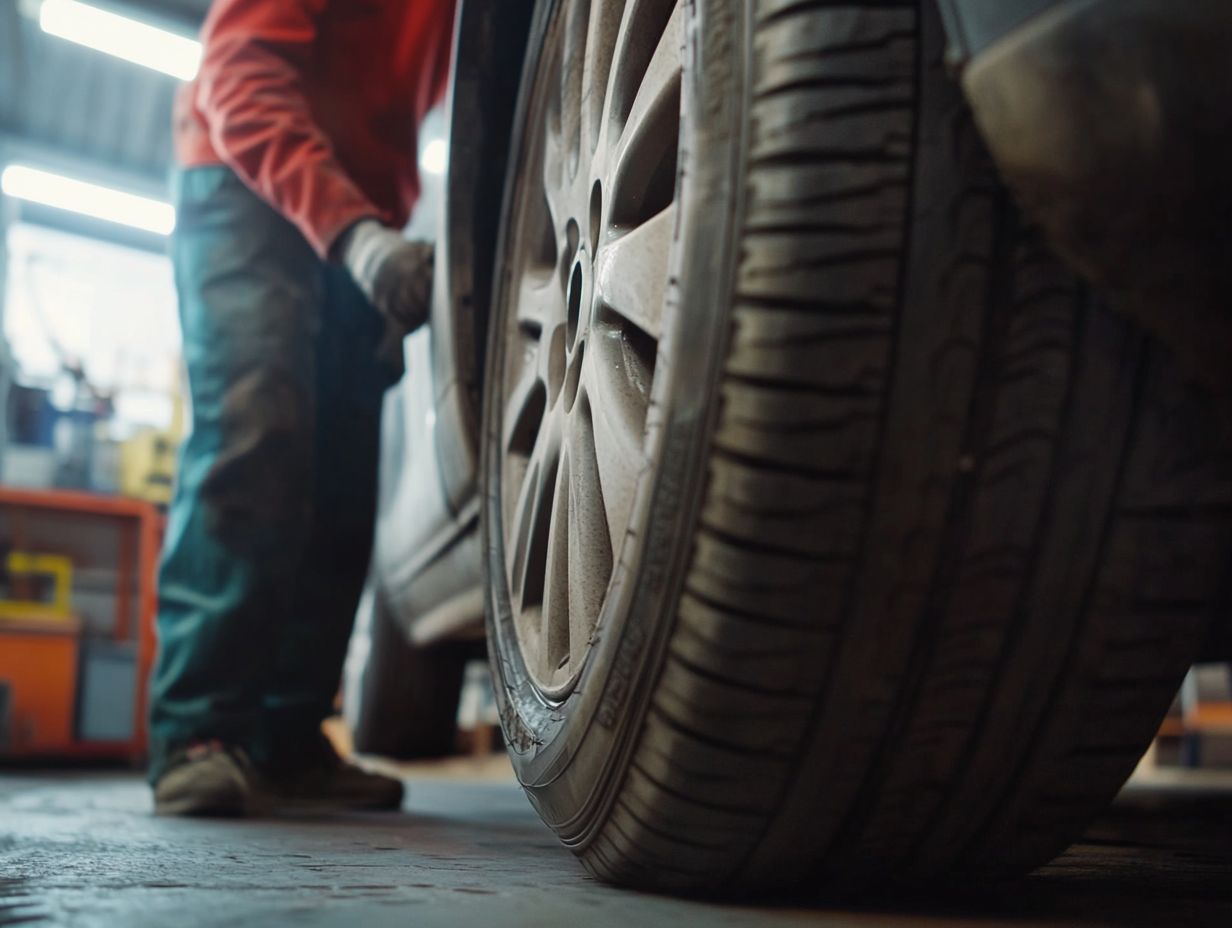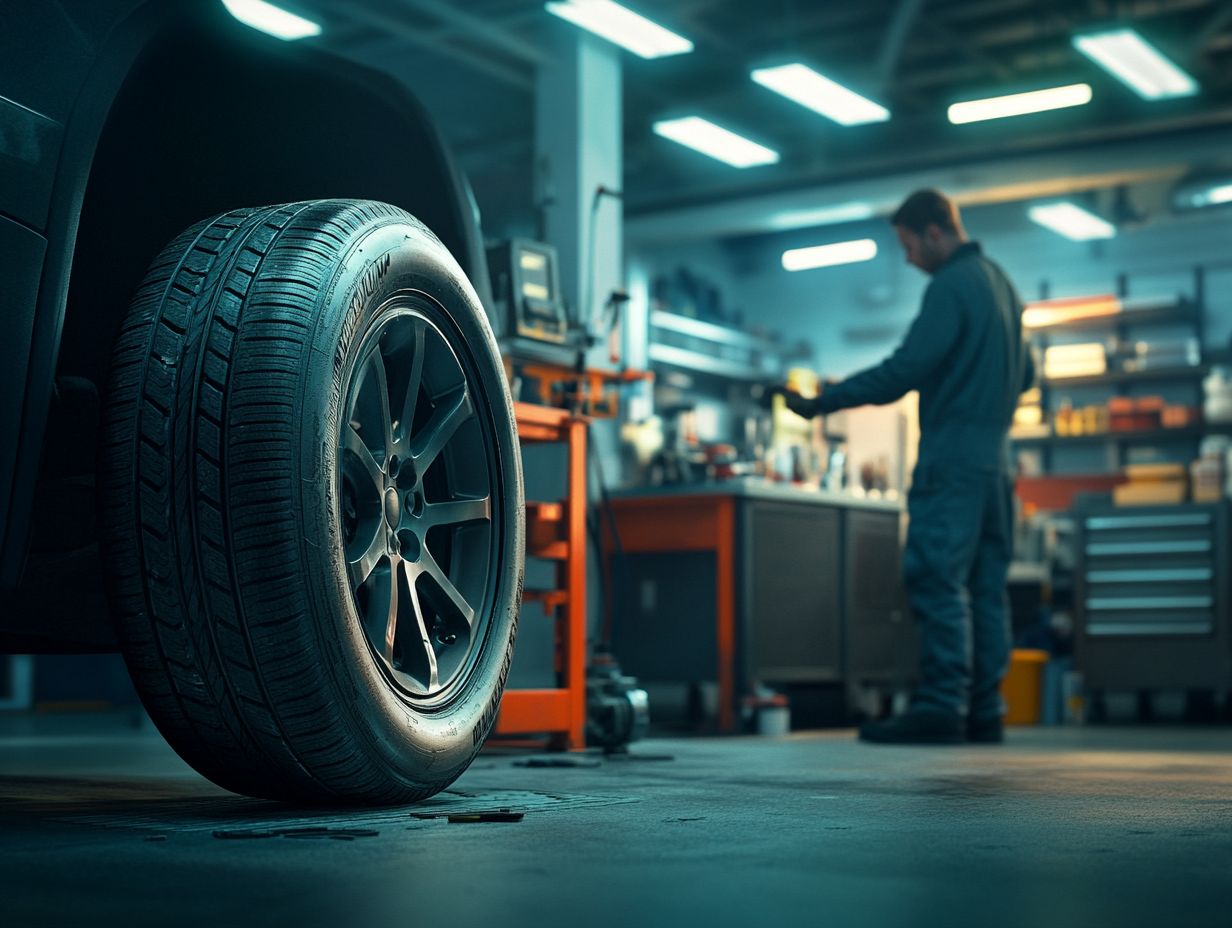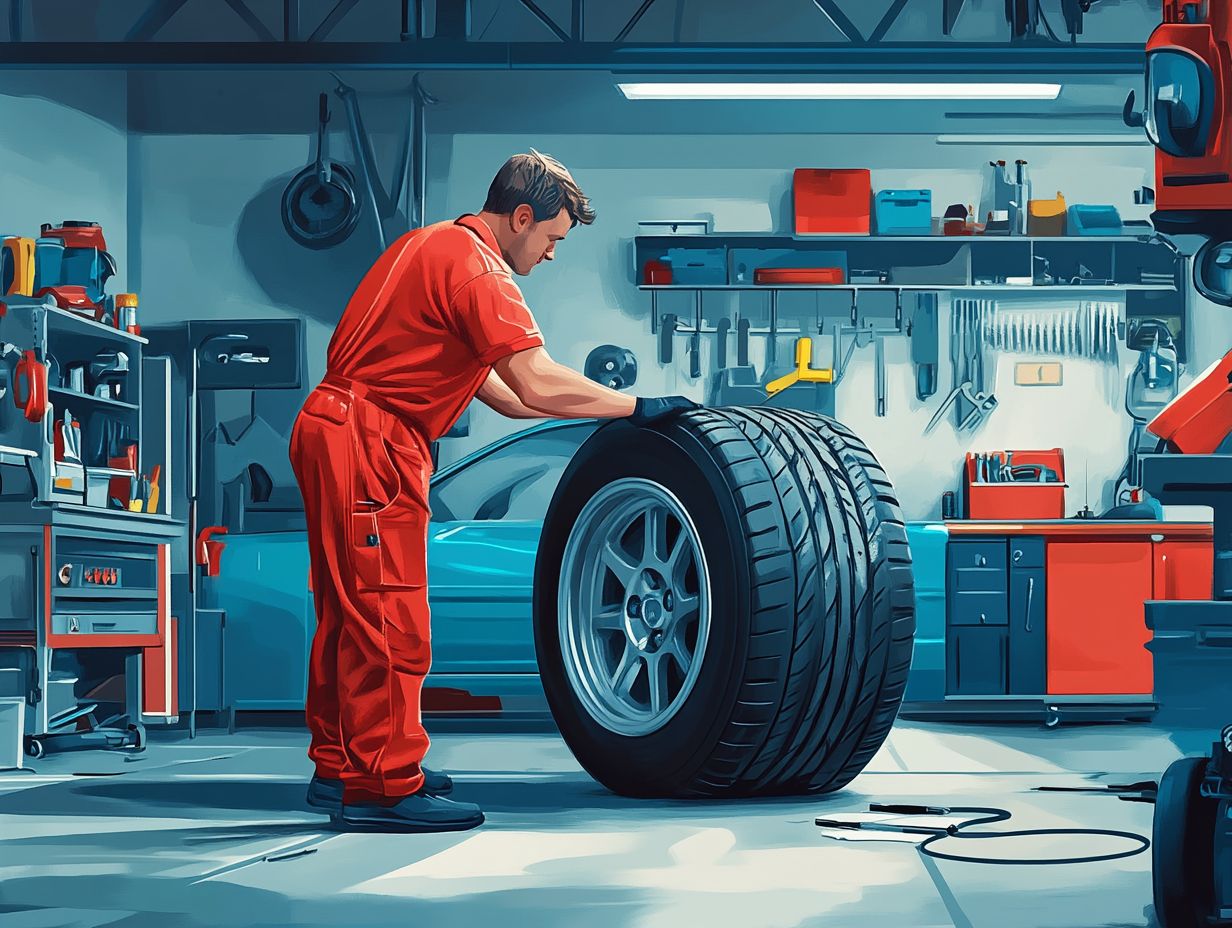How Often Should You Rotate Your Tires?
Tire rotation is crucial for vehicle maintenance. Regularly rotating your tires enhances performance and prolongs their lifespan.
This article explains why tire rotation matters, how often to schedule it, and signs indicating it’s time for a rotation.
You’ll also find step-by-step instructions for rotating your tires yourself and tips for optimal tire care. Keep your wheels turning efficiently and enjoy every drive!
Contents
Key Takeaways:

- Regular tire rotation maintains tire performance and longevity.
- Rotate your tires every 5,000-7,500 miles, depending on driving habits and vehicle type.
- Watch for wear patterns and low tread depth as signs to rotate your tires.
Importance of Tire Rotation
Tire rotation is key to ensuring your tires perform their best while lasting longer. Regular rotation promotes even wear, which improves traction and handling.
Neglecting this simple service can lead to uneven tread wear, causing risks like hydroplaning or tire blowouts. Committing to regular tire rotation boosts your safety and saves you money by delaying tire replacements.
Why is Tire Rotation Necessary?
Regular tire rotation ensures even wear, crucial for maintaining traction and handling in different driving conditions. Uneven wear can lead to reduced braking efficiency and compromised vehicle stability.
Research shows that skipping tire rotations can reduce tire lifespan by up to 25%. Keeping your tires healthy can improve fuel efficiency by up to 10%, saving you money and reducing your carbon footprint.
Safety must always come first. Tires in poor condition increase stopping distances, heightening the risk of accidents. Understanding the link between tire maintenance and vehicle performance is essential for every responsible vehicle owner.
Recommended Frequency for Tire Rotation
The suggested frequency for tire rotation depends on your vehicle’s make and model. Most manufacturers recommend rotating tires every 5,000 to 7,500 miles.
Following these guidelines helps your tires wear evenly and perform their best.
Factors that Affect Rotation Frequency
Several factors determine how often you should rotate your tires, such as driving conditions and tire types. If you frequently drive in the city, the constant stops and starts can lead to uneven wear, especially on the front tires.
In contrast, highway driving typically results in smoother tread wear. The type of tires also matters; performance tires may need more frequent rotations for peak performance.
Always consider the manufacturer’s guidelines to align your tire maintenance with the demands of the road and tire type. This approach ensures both longevity and safety for your vehicle.
Signs that Your Tires Need to be Rotated

Recognizing the signs that indicate your tires need rotation is essential for ensuring both your vehicle’s safety and optimal performance. Look out for common indicators such as uneven wear patterns, noticeable differences in the depth of the grooves on your tires, and any unusual handling concerns.
Keeping an eye on these details can significantly enhance your driving experience.
Identifying Wear Patterns and Tread Depth
Make it a habit to regularly check for wear patterns! It’s an easy way to keep your tires in top shape. Assessing the depth of the grooves on your tires is crucial; these indicators can signal when it s time for a tire rotation.
By paying close attention to these important factors, you can proactively tackle any potential issues that might come up. Understanding how tire wear directly impacts grip is especially vital in challenging weather conditions.
Effective tire maintenance boosts your driving comfort and plays a significant role in road safety. You can measure tread depth using a specialized gauge or simply employ the popular penny test just insert a penny into the tread, and it ll reveal how deep it goes.
Healthy tires usually boast a tread depth of 4/32 of an inch or more. Tires worn down to 2/32 or less are considered unsafe replace them promptly to prevent any loss of grip on the road!
How to Rotate Your Tires
You can effortlessly rotate your tires with the right tools and a bit of knowledge. By following a step-by-step guide, you ensure that the job is done effectively, ultimately enhancing the longevity of your tires.
Step-by-Step Instructions
To rotate your tires successfully, follow these step-by-step instructions that will seamlessly guide you through the process, including the proper tire positioning for various vehicle types.
Understanding the significance of tire rotation is crucial; it not only enhances tire lifespan but also improves your vehicle’s performance. Start by gathering the necessary tools: a lug wrench (a tool for loosening and tightening lug nuts), a jack, and jack stands.
Begin by loosening the lug nuts on one wheel while your vehicle remains firmly on the ground. Once they are loosened, elevate the vehicle using the jack and secure it with jack stands for safety.
Next, completely remove the lug nuts and tires. For front-wheel drive vehicles, switch the rear tires to the front and do the opposite for rear-wheel drives.
Always ensure that the tires are evenly inflated to the manufacturer s recommended pressure before placing them back on. If DIY isn t your thing, opting for professional service guarantees a thorough check and alignment. Don t wait check your tires today for a smooth ride!
Benefits of Regular Tire Rotation
Regular tire rotation provides a multitude of advantages, including improved tire performance, extended longevity, and heightened safety on the roads. It truly becomes a critical aspect of your vehicle maintenance routine.
Improved Tire Performance and Longevity

Improving tire performance and longevity is one of the key benefits you gain from regular tire rotation. It helps you maintain optimal traction and reduces the risk of handling issues.
When your tires wear evenly, you significantly enhance your vehicle’s grip on the road, resulting in superior cornering and stopping abilities. This uniform wear ensures predictable handling and extends the lifespan of your tires, allowing you to enjoy seamless performance for much longer.
Regular maintenance, including timely rotations, is crucial for achieving this balance. By shifting your tires between different positions, you can counteract the natural variations in wear caused by factors like weight distribution and your unique driving habits.
As a result, these practices help prevent premature deterioration, ultimately leading to a safer and more efficient driving experience. Rotate your tires regularly for a smoother ride!
Additional Tips for Maintaining Your Tires
In addition to regularly rotating your tires, maintaining them involves a few key actions. You’ll want to check tire pressure regularly, ensure proper alignment, and stay alert for any signs of potential suspension damage.
Each of these elements plays a crucial role in extending the life of your tires and ensuring a safe, smooth ride.
Proper Inflation and Alignment
Ensuring proper tire inflation and alignment is essential for optimal tire performance and safety. Both elements significantly influence driving dynamics and fuel efficiency.
When your tires are inflated to the correct pressure, they maintain their intended shape and contact patch, directly influencing your traction and stability on the road. Conversely, whether due to under-inflation or over-inflation, your tires can suffer from uneven wear and compromised handling, leading to dangerous driving conditions.
Proper alignment ensures that all four tires are pointing in the same direction, minimizing friction and enhancing your vehicle’s responsiveness. Regularly check your tire pressure at least once a month and consult a professional for alignment adjustments. Doing so will extend the life of your tires and improve your overall safety on the road.
Keep a tire pressure gauge handy and align your tires according to the manufacturer s specifications.
Frequently Asked Questions
How Often Should You Rotate Your Tires?
The recommended frequency for when and how to rotate your tires is every 6,000-8,000 miles or every 6 months, whichever comes first.
Why is it Important to Rotate Your Tires?

Rotating your tires helps evenly distribute wear and prolongs their lifespan. It also maintains proper traction and handling of your vehicle.
Can I Rotate My Tires Myself?
While it is possible to rotate your tires yourself, getting a pro to handle it ensures the job is done correctly and avoids potential damage to your tires or vehicle.
What Happens if I Don’t Rotate My Tires?
If you do not rotate your tires regularly, they will wear unevenly, causing one or two tires to wear out faster than the others. This can result in a bumpy ride, poor handling, and potentially even a blowout.
Do I Need to Rotate My Tires if I Have All-Wheel Drive?
Yes, even with all-wheel drive, it is crucial to rotate your tires regularly to ensure even wear and prolong their lifespan.
Should I Rotate My Spare Tire as Well?
If your spare tire is the same size as your other tires and is in good condition, include it in the rotation to ensure even wear and prolong its lifespan.





